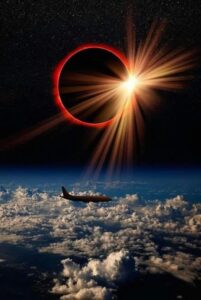Re Ian Bremmer 'Could third-party candidates upend the 2024 US election?' 3 April The current political movement in the USA…
Space: the final frontier January 2024-
Written by Diana Thebaud Nicholson // April 23, 2024 // Aviation & Aerospace // No comments
NASA 2024: Onward and Upward (YouTube)
Aerospace And Defense In 2024: What To Watch For
Search for Extraterrestrial Intelligence (SETI)
Key People To Watch In The Space Sector In 2024
NASA 2024: Onward and Upward (YouTube)
Landing science on the Moon, demonstrating quiet supersonic aircraft, and launching two new Earth climate satellites, plus a mission to Europa, one of Jupiter’s icy moons, are just a FEW of the milestones we have planned for 2024.
How Sarah Al Amiri Is Launching the UAE Into the Asteroid Belt
She helped lead a young space agency to Mars. Now she has her sights set further into the galaxy. (Sept. 2023)
UAE launches space academy for Emiratis to boost growing sector
Sarah Al Amiri, chairwoman of the Space Agency, says centre will equip citizens with vital skills
The UAE has established a dedicated academy to help future generations of Emiratis build careers in the growing space sector.
The academy will offer an educational, research and practical environment allowing Emirati students to explore and create new technology, including learning how to design spacecraft and plan for missions.
The project is part of a Dh3 billion ($820 million) space fund that was announced last year. (Nov 2023)
Voyager 1 transmitting data again after Nasa remotely fixes 46-year-old probe
Engineers spent months working to repair link with Earth’s most distant spacecraft, says space agency
 6-8 April
6-8 April
CTV National News: An awe inspiring eclipse
People in North America gathered at spots across the path of totality to watch the solar eclipse.
Total solar eclipse 2024 thrills millions across North America (video, photos)
The total solar eclipse was one of the most-watched eclipses ever.
The path of totality crossed four states in Mexico (Sinaloa, Nayarit, Durango and Coahuila) before sweeping over 15 U.S. states (Texas, Oklahoma, Arkansas, Missouri, Illinois, Kentucky, Tennessee, Michigan, Indiana, Ohio, Pennsylvania, New York, Vermont, New Hampshire, and Maine) and seven Canadian Provinces (Ontario, Quebec, New Brunswick, Prince Edward Island, Nova Scotia and Newfoundland).
Some 31.6 million people live in the totality path in the U.S. alone, NASA officials have said.
The off-the-beaten-path faces and places of the total eclipse in Montreal
While Montreal’s downtown may have been in the path of totality of Monday’s eclipse, it certainly wasn’t destination No. 1 for many viewers.
Shortly after noon, streets near the city’s bridges began to fill with cars leaving the island for the viewing experience.
Hundreds of thousands headed off-island — where they could see the eclipse outside of a busy city, free of skyscrapers and noise from construction crews — or to nearby landmarks, such as Sainte-Hélène Island on the St. Lawrence River, where activities had been planned for months.
Solar eclipse inspires awe in Quebec’s Eastern Townships, which had one of best views on Earth
The moon’s shadow bathed Sherbrooke in darkness for nearly three and a half minutes, making it one of the areas that experienced the longest totality, the full blocking of the sun’s light.
It made parts of southern Quebec a hub for those looking skyward
The April 8 solar eclipse will bring weird sights, sounds and feelings
The darkening of the sky on April 8 will bring with it a plethora of strange phenomena.
(Space) On Monday (April 8), the sky over a swathe of North America will briefly darken as the moon covers the sun completely during a total solar eclipse.
For a maximum of 4 minutes and 28 seconds along a 115-mile-wide (185 kilometers) and 10,000-mile-long (16,000 km) path passing through Mexico, the United States and Canada, the moon will completely cover the sun, and the sky will fall dark. And, outside this path of totality, observers will be treated to a partial solar eclipse, which is still a sight to behold.
It’s not surprising that our ancient ancestors viewed total solar eclipses with trepidation and fear. They were often thought to be dire portents from the gods, indicating the deities’ displeasure — or observations of the sun being consumed by fearsome creatures like dragons, which needed to be scared away with loud noises.
22 February
Odysseus: The Moon mission to prevent ‘spaceship sandblasting’
(BBC) Lunar exploration is heating up once more, and it is also changing. Intuitive Machines, a firm based in Houston, Texas, has become the first commercial company to successfully land on the Moon, near the lunar south pole.
The mission is the first American lunar landing in more than 50 years, since the crewed Apollo 17 mission in December 1972. It’s part of Nasa’s Commercial Lunar Payload Services (CLPS) initiative intended to support the agency’s Artemis programme that is aiming to send astronauts back to the Moon and even build a permanent base there. Just 12 men have set foot on the Moon, so Artemis will also aim to land the first woman on the lunar surface. Sending robotic missions like Odysseus are essential steps torwards the next giant leap.
…landing on the lunar surface is only the beginning for Odysseus. The lander will begin a suite of experiments that will hopefully provide data useful for a wave of future missions and help to ensure the safety of humans when they eventually return to set foot on the lunar regolith.
Intuitive Machines lands on moon in nail-biting descent of private Odysseus lander, a 1st for US since 1972
Odysseus is the first private spacecraft ever to land softly on Earth’s nearest neighbor.
(Space) In December 2017, then-President Donald Trump ordered NASA to return astronauts to the moon in the relatively near future. This directive gave rise to a broad and ambitious program called Artemis, which aims to establish a long-term, sustainable human presence on and around the moon by the end of the 2020s — and to use the knowledge gained in doing so to help get astronauts to Mars by the late 2030s or early 2040s.
NASA plans to set up one or more Artemis bases in the moon’s southern polar region, which is thought to harbor lots of water ice. Before sending astronauts there, however, the agency wants to collect more data about this little-explored area — to help determine, for example, just how much water it contains and how easy this crucial resource is to access.
Intuitive Machines makes first U.S. moon landing in 51 years
(WaPo) For the first time since the last of the Apollo missions in 1972, an American spacecraft reached the surface of the moon Thursday, a significant step toward NASA’s plan to eventually return astronauts to Earth’s closest celestial neighbor.
After a tense several minutes in which ground controllers were unsure about the health of the spacecraft, designed and operated by Houston-based Intuitive Machines, company officials declared it had landed successfully and was communicating with Earth. About two hours after the landing, the company confirmed that “after troubleshooting communications” the spacecraft was indeed standing upright, a momentous feat for the growing commercial space industry.
… Under its Artemis program, NASA intends to establish an enduring presence at the lunar south pole. …and in 2019 then-vice president Pence directed NASA to return astronauts to the moon by this year. That won’t happen. But the program was embraced by the Biden administration, the first time a deep-space, human-exploration campaign has survived subsequent presidential administrations since the Apollo era.
Thursday, Jan. 25
NASA to Observe Day of Remembrance, Host Employee Safety Town Hall
In honor of the members of the NASA family who lost their lives while furthering the cause of exploration and discovery for the benefit of all, the agency will host its annual Day of Remembrance Thursday, Jan. 25. Traditionally held on the fourth Thursday in January each year, NASA Day of Remembrance will commemorate the crews of Apollo 1 and space shuttles Challenger and Columbia.
19 January
Japan’s SLIM moon craft short on power after successful lunar landing
(Reuters) – Japan on Saturday became the fifth country to put a spacecraft on the moon, but solar power issues threatened to cut short the nation’s mission to prove a “precision” landing technology and revitalise a space programme that has suffered setbacks.
The Japan Aerospace Exploration Agency (JAXA) said its Smart Lander for Investigating Moon (SLIM) landed the moon’s surface at around 12:20 a.m. (1520 GMT Friday), but its solar panels were not able to generate electricity, possibly because they are angled wrong.
NASA Continues Artemis Moon Rocket Engine Tests with 1st Hot Fire of 2024
NASA continued a critical test series for future flights of NASA’s SLS (Space Launch System) rocket in support of the Artemis campaign on Jan. 17 with a full-duration hot fire of the RS-25 engine on the Fred Haise Test Stand at NASA’s Stennis Space Center near Bay St. Louis, Mississippi.
Data collected from the test series will be used to certify production of new RS-25 engines by lead contractor Aerojet Rocketdyne, an L3Harris Technologies company, to help power the SLS rocket on future Artemis missions to the Moon and beyond, beginning with Artemis V.
11 January
SETI scientists begin huge new hunt for intelligent aliens
The search for alien technosignatures has dramatically expanded, thanks to a new experiment involving an alliance between the SETI Institute, Breakthrough Listen and the National Radio Astronomy Observatory (NRAO).
The new project is called COSMIC (“Commensal Open-Source Multimode Interferometer Cluster”) and is in operation at the Karl G. Jansky Very Large Array (VLA) of radio telescopes in New Mexico.
COSMIC makes this possible and delivers a huge jump in coverage.
9 January
NASA delays first Artemis astronaut flight to late 2025, moon landing to 2026
(CBS) NASA’s first crewed Artemis mission, a flight to send four astronauts on a voyage around the moon and back, is being delayed nearly a year, from late 2024 to at least September 2025, NASA announced Tuesday. Likewise, the first astronaut moon landing is slipping from late 2025 to September 2026.
“We are adjusting our schedule to target Artemis 2 for September of 2025 and September of 2026 for Artemis 3, which will send humans for the first time to the lunar south pole. Artemis 4 remains on track for September 2028, and though challenges are clearly ahead, our teams are making incredible progress.”
NASA launched the Artemis program’s first test flight, Artemis 1, in November 2022, using the agency’s powerful Space Launch System heavy lift rocket to send an unpiloted Orion crew capsule on a flight around the moon and back.



